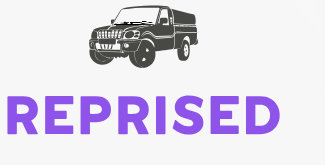Educational technology (EdTech) has dramatically reshaped the way teaching and learning take place in today’s classrooms. The integration of digital tools into education offers opportunities for more personalized, engaging, and efficient learning experiences. As technology continues to advance, it plays a key role in equipping students with the skills they need to thrive in the 21st century. This article explores the role of educational technology in modern classrooms, focusing on its benefits, applications, and future potential.

Personalized Learning
One of the most significant advantages of educational technology is its ability to provide personalized learning experiences. Technology allows teachers to tailor instruction to individual student needs, ensuring that everyone progresses at their own pace.
How Technology Supports Personalized Learning:
- Adaptive learning platforms: Tools like Khan Academy or DreamBox adapt the difficulty of questions based on the student’s performance, providing a customized learning experience.
- Student data analytics: Teachers can track student progress through digital tools, identifying areas where students may need additional support or challenges.
- Interactive lessons: Apps and educational games engage students with varying learning styles, making lessons more accessible to all.
Increased Engagement and Motivation
Technology has a unique ability to make learning more interactive and engaging, which can significantly boost student motivation. Educational tools that incorporate games, videos, and virtual simulations capture students’ attention and make learning more fun.
Tools Enhancing Engagement:
- Gamification: Integrating game elements such as points, badges, and leaderboards into learning motivates students to complete tasks and compete in a fun, rewarding way.
- Virtual and augmented reality (VR/AR): Students can explore historical landmarks, dive into oceans, or examine the human body through immersive VR/AR experiences, making learning tangible and exciting.
- Interactive whiteboards: Smartboards encourage student participation by allowing them to interact with lessons by solving problems, annotating content, or collaborating in real time.
Collaboration and Communication
Educational technology facilitates collaboration and communication, both within the classroom and beyond. Digital tools make it easier for students to work together on projects, share ideas, and engage in meaningful discussions, even if they’re in different locations.
Tools for Collaboration:
- Collaborative platforms: Google Classroom, Microsoft Teams, and other platforms allow students to work on shared documents, presentations, and projects in real time.
- Discussion forums: Tools like Edmodo or Padlet enable students to discuss topics, ask questions, and share resources, fostering a collaborative learning environment.
- Video conferencing: Virtual classrooms and video conferencing tools, such as Zoom or Google Meet, allow for seamless collaboration with peers and teachers, even when learning remotely.
Access to Global Resources
The internet has opened up a world of educational resources that were previously inaccessible. With educational technology, students and teachers can access global libraries, databases, and online courses, enriching the learning experience with a wide range of materials.
Resources Available:
- Open educational resources (OERs): Free resources, such as textbooks, courses, and lesson plans, are available to students and educators worldwide, enhancing learning opportunities.
- Massive open online courses (MOOCs): Platforms like Coursera and edX provide access to courses from leading universities, helping students explore a variety of topics.
- Digital libraries: Websites like JSTOR and Project Gutenberg offer a vast array of academic papers, books, and journals that support deeper learning.
Improving Teacher Efficiency
Educational technology also enhances teacher efficiency by automating tasks, managing student data, and providing real-time feedback. This frees up more time for teachers to focus on instruction and student support.
How Technology Supports Teachers:
- Automated grading tools: Digital assessment platforms can automatically grade quizzes and assignments, saving teachers time on routine tasks.
- Lesson planning apps: Tools like Planboard or Common Curriculum simplify lesson planning by allowing teachers to organize and schedule lessons online.
- Professional development: Teachers can use online resources to develop new skills, participate in webinars, and collaborate with peers globally.
Preparing Students for the Future
As technology becomes an integral part of everyday life, students must develop digital literacy skills to succeed in the future workforce. Educational technology equips students with the technical and critical thinking skills they need to navigate the modern world.
Key Digital Skills for Students:
- Coding and programming: Learning to code through platforms like Scratch or Code.org helps students build problem-solving skills and prepares them for tech-driven careers.
- Digital citizenship: Understanding online safety, privacy, and digital etiquette is essential as students spend more time online.
- Data analysis: With data playing a central role in many industries, students who can analyze and interpret information will have a competitive edge.
Conclusion
Educational technology has revolutionized modern classrooms, providing students with personalized learning experiences, increasing engagement, and preparing them for a tech-driven future. By integrating digital tools into education, teachers can enhance their instruction, foster collaboration, and improve overall student outcomes. As EdTech continues to evolve, its role in shaping the future of education will only grow.

